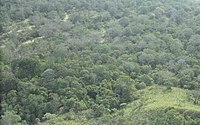 A chainsaw buzzes, branches snap, and an Amazon tree crashes to the ground. It could be just another of the thousands of trees felled each year in Brazil's portion of the world's largest forest except for one detail: a microchip attached to its base holding data about its location, size and who cut it down.
A chainsaw buzzes, branches snap, and an Amazon tree crashes to the ground. It could be just another of the thousands of trees felled each year in Brazil's portion of the world's largest forest except for one detail: a microchip attached to its base holding data about its location, size and who cut it down.With a hand-held device, forestry engineer Paulo Borges pulls up the tree's vital statistics from the chip -- a 14-meter-high (46-foot) tree known as a "mandiocao" cut down in Mato Grosso state, the southern edge of the Amazon where the forest has largely been cleared to create farmland.
It is only a small pilot project, but its leaders say the microchip system has the potential to be a big step forward in the battle to protect the Amazon.
The chips allow land owners using sustainable forestry practices to distinguish their wood from that acquired through illegal logging that each year destroys swathes of the forest. Each microchip tells a tree's story from the point it was felled to the sawmill that processed and sold the wood, key information for buyers who want to know where it came from.
"People talk a lot these days about wood coming from sustainable forestry practices -- this is a system that can prove it," said Borges, of the organization Acao Verde, or Green Action, which is managing the project on a large farm.
Brazil is under international pressure to reduce deforestation that destroys thousands of square miles of the Amazon each year and make the country one of the world's biggest sources of greenhouse gasses.
More...
